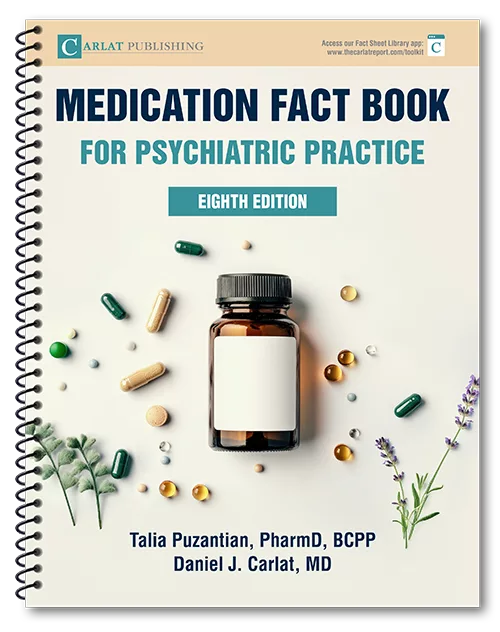Home » Neurofeedback and Adult ADHD
Neurofeedback and Adult ADHD
May 1, 2018
From The Carlat Psychiatry Report
Rehan Aziz, MD.
Dr. Aziz disclosed that he has no relevant financial or other interests in any commercial companies pertaining to this educational activity.
Review of: Schonenberg M et al, Lancet Psychiatry 2017;4(9):673–684
With neurofeedback, patients are hooked up to an EEG and shown images through various forms of media. The idea is that the EEG can detect brain waves that are associated with improvement in various symptoms, and then the patient can be taught to produce “healthier” brain waves. Some studies have shown that neurofeedback improves ADHD in children and adolescents. However, the results are controversial, and neurofeedback in general needs further research to prove its efficacy. (See TCPR April 2017 for a Q&A on neurofeedback.)
This investigation tested neurofeedback treatment in adults. The triple-blinded, randomized, controlled study was conducted at Germany’s University of Tubingen. Eligible participants met the DSM-IV-TR criteria for ADHD, were ages 18–60, and had no or stable use of medication.
Overall, 118 people were randomly assigned to neurofeedback (38), sham neurofeedback (39), or meta-cognitive group therapy (41). In the neurofeedback group, participants received 30 treatments, while the sham group underwent 15 sham sessions followed by 15 treatment sessions. In the therapy arm, patients attended 12 group therapy sessions. The primary outcome was scores on the Conners’ Adult ADHD Rating Scale (CAARS), assessed before treatment, at mid-treatment (8 weeks), after treatment (16 weeks), and 6 months later.
Significant improvement on the CAARS from pre-treatment to the 6-month follow-up was observed for all treatments. For the neurofeedback group, scores dropped from 135 to 104. For sham neurofeedback, they decreased from 132 to 94. For meta-cognitive group therapy, they fell from 138 to 104. Clinical improvements were unrelated to EEG brain activity changes. No serious adverse events resulted from any treatment.
TCPR’s Take
These findings suggest EEG neurofeedback is not superior to a sham condition or group psychotherapy in adults with ADHD. Data supporting ADHD EEG neurofeedback remain sparse, but we’re interested to see if further research proves it to be an option for adults who do not respond to medications, have significant side effects, or object to using medication. For now, though, we remain skeptical.
General PsychiatryWith neurofeedback, patients are hooked up to an EEG and shown images through various forms of media. The idea is that the EEG can detect brain waves that are associated with improvement in various symptoms, and then the patient can be taught to produce “healthier” brain waves. Some studies have shown that neurofeedback improves ADHD in children and adolescents. However, the results are controversial, and neurofeedback in general needs further research to prove its efficacy. (See TCPR April 2017 for a Q&A on neurofeedback.)
This investigation tested neurofeedback treatment in adults. The triple-blinded, randomized, controlled study was conducted at Germany’s University of Tubingen. Eligible participants met the DSM-IV-TR criteria for ADHD, were ages 18–60, and had no or stable use of medication.
Overall, 118 people were randomly assigned to neurofeedback (38), sham neurofeedback (39), or meta-cognitive group therapy (41). In the neurofeedback group, participants received 30 treatments, while the sham group underwent 15 sham sessions followed by 15 treatment sessions. In the therapy arm, patients attended 12 group therapy sessions. The primary outcome was scores on the Conners’ Adult ADHD Rating Scale (CAARS), assessed before treatment, at mid-treatment (8 weeks), after treatment (16 weeks), and 6 months later.
Significant improvement on the CAARS from pre-treatment to the 6-month follow-up was observed for all treatments. For the neurofeedback group, scores dropped from 135 to 104. For sham neurofeedback, they decreased from 132 to 94. For meta-cognitive group therapy, they fell from 138 to 104. Clinical improvements were unrelated to EEG brain activity changes. No serious adverse events resulted from any treatment.
TCPR’s Take
These findings suggest EEG neurofeedback is not superior to a sham condition or group psychotherapy in adults with ADHD. Data supporting ADHD EEG neurofeedback remain sparse, but we’re interested to see if further research proves it to be an option for adults who do not respond to medications, have significant side effects, or object to using medication. For now, though, we remain skeptical.
Issue Date: May 1, 2018
Table Of Contents
Recommended
Newsletters
Please see our Terms and Conditions, Privacy Policy, Subscription Agreement, Use of Cookies, and Hardware/Software Requirements to view our website.
© 2026 Carlat Publishing, LLC and Affiliates, All Rights Reserved.


_-The-Breakthrough-Antipsychotic-That-Could-Change-Everything.webp?t=1729528747)



